Updated in 2017 to reflect new taxonomic decisions made by the IUCN Cat Specialist Group’s Cat Classification Task Force1 and 2018 after determination of six tiger subspecies2.
Being cat obsessed, I always want to find out more about these amazing animals. So recently I was searching for the most endangered felines in the world. I ended up finding conflicting results (I think this is partially due to the fact that listing certain species is ‘sexier’ than others and that some addressed subspecies while others did not). So I decided to do my own research. It took some time, looking up every subspecies of wild cat, but it was well worth it. And now, in honor of Endangered Species Day, which was this last Friday I decided to put together a list of the ten most endangered felines in the world. Now a list depends on the parameters set and since the exact numbers of breeding individuals for many subspecies or even species is not known, I will deal only with the numbers that are known.
This is the overall list of the most endangered wild cats in the world, including subspecies and species.
1. South China Tiger (Panthera tigris amoyensis)
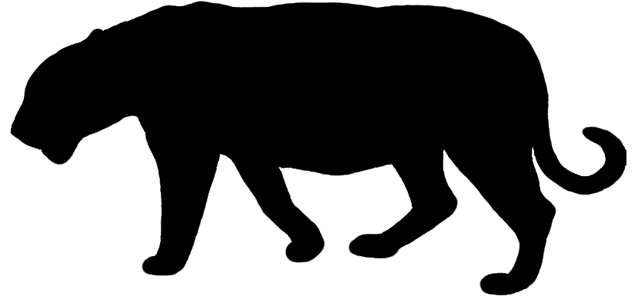 Status: Critically Endangered, most likely Extinct in the Wild
Status: Critically Endangered, most likely Extinct in the Wild
Population Size: 72* (Captive Only)
Population Trend: Unknown
2. Balkan Lynx (Lynx lynx balcanicus)
 Status: Critically Endangered
Status: Critically Endangered
Population Size3: 20-39
Population Trend: Decreasing
3. Asiatic Cheetah (Acinonyx jubatus venaticus)
Status: Critically Endangered
Population Size4: Less than 40
Population Trend: Decreasing
4. Arabian Leopard (Panthera pardus nimr)
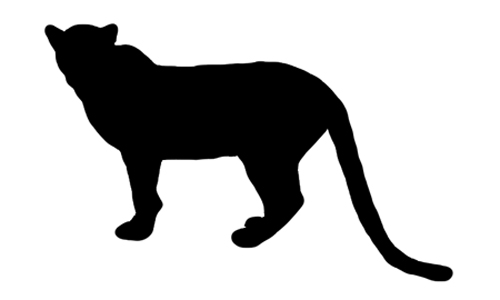 Status: Critically Endangered
Status: Critically Endangered
Population Size5: 45-200
Population Trend: Decreasing
5. Amur Leopard (Panthera pardus orientalis)
Status: Critically Endangered
Population Size6: Less than 60
Population Trend: Increasing
6. Iberian Lynx (Lynx pardinus)
 Status: Critically Endangered
Status: Critically Endangered
Population Size7: ~ 156
Population Trend: Increasing
7. Javan Leopard (Panthera pardus melas)
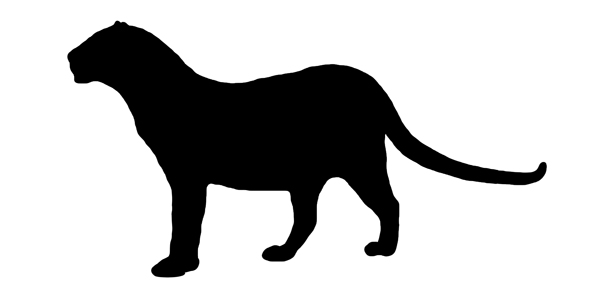 Status: Critically Endangered
Status: Critically Endangered
Population Size8: Below 250
Population Trend: Decreasing
8. Barbary Serval (Leptailurus serval constantina)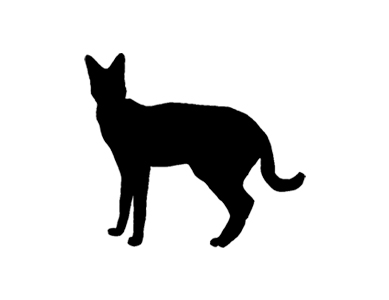 Status: Critically Endangered
Status: Critically Endangered
Population Size9: Below 250
Population Trend: Decreasing
9. Northwest African Cheetah (Acinonyx jubatus hecki)
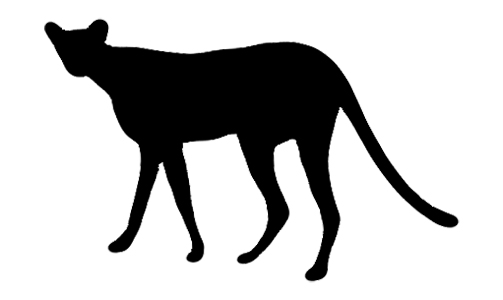 Status: Critically Endangered
Status: Critically Endangered
Population Size10: Below 250
Population Trend: Decreasing
Sri Lankan Leopard (Panthera pardus kotiya)
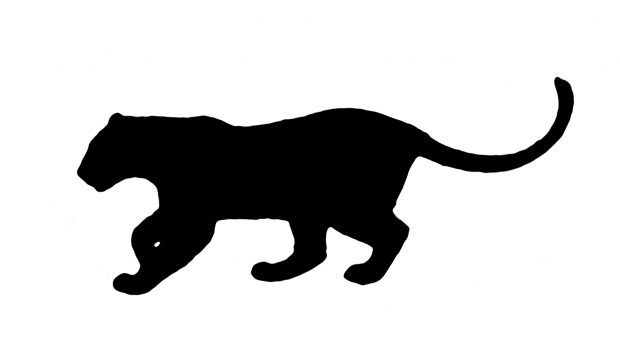
Status: Endangered
Population Size11: 700-950
Population Trend: Decreasing
There are a few really interesting things to note when looking at this list. One thing for example is that all but two of these subspecies and species’ population numbers are decreasing (the exceptions being the Amur Leopard and Iberian Lynx). This downward trend is really not a great sign for the survival of these cats in the long run.
Another interesting thing is that seven out of the ten cats are larger cats (though not all of them are classified as Big Cats). Larger animals require larger areas to contain enough prey to sustain themselves. As their habitat is constantly disappearing so do their numbers decrease. The only plus side of this is that if we can protect these large cats, so do we protect lots of habitat not only for them but many other animals as well.
Another thing to note is that only one species (not subspecies) has made the list, the Iberian Lynx. It proves how threatened of extinction this animal really is. Some tiger and lion subspecies have gone extinct due to humans in recent times, but if the Iberian Lynx was to disappear for good, it would be the first cat species to go extinct since the Saber-toothed Cat, which died out 11,000 years ago.
On a personal note, in creating this list, it was amazing was to discover the Balkan Lynx, a subspecies of Eurasian Lynx I had never heard of, and it is the most threatened cat of extinction!
Sources:
- Cat news, Special Issue, Number 11, Winter 2017: A revised taxonomy of the Felidae
- 2018, Liu: Current Biology: Genome-Wide Evolutionary Analysis of Natural History and Adaptation in the World’s Tigers
- Balkan Lynx Population (2015): http://www.iucnredlist.org/details/68986842/0
- Asiatic Cheetah Population (2016): Cat News, Special Issue, Number 10, Autumn 2016: Cats in Iran
- Arabian Leopard Population (2008): http://www.iucnredlist.org/details/15954/0
- Amur Leopard Population (2014): http://www.iucnredlist.org/details/15954/0
- Iberian Lynx Population (2015): http://www.iucnredlist.org/details/12520/0
- Javan Leopard Population (2008): http://www.iucnredlist.org/details/15954/0
- Barbary Serval Population (2015): http://www.iucnredlist.org/details/11638/0
- Northwest African Cheetah Population (2008): http://www.iucnredlist.org/details/221/0
- Sri Lankan Leopard Population (2015): http://www.iucnredlist.org/details/15954/0

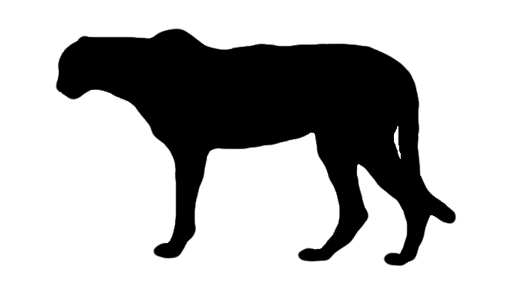
Hi,
That’s a very interesting list you managed to put together. Very nice to see someone invest time and effort into something like this!
I have recently been interested in the most endangered cats myself (mostly the Big Cats, but not just them) and just like yourself found it hard to find a reasonably up to date list which also does not only include what it considers interesting or -if I use your term- „sexier“ animals. Basically, your list is what I was looking for 🙂
And there surely are animals on the list I should have known (more ) about! For example, I have to admit that, like yourself before doing your reasearch, I have not heard of Balkan Lynx.. which is unbeliavable considering how many various ‚lists of endangered cats‘ I have seen until I stumbled upon yours. I already knew Iberian Lynx is very endangered and as you mentioned could be the first cat specied to go extinct since a long long time (I hope I can believe some articles I read which reported the numbers of the lynx are at least stabilized for now and there’s attention being paid to the animal and it’s situation). But the Balkan lynx… oh my the numbers are not looking good and so many people don’t even know it exists..
South China Tiger really is in a bad position… and if we consider it’s the oldest tiger subspecies, from which the other then evolved (at least that’s what I remember reading) it really is sad we let it die out in the wild (would love to believe there are still some left, hidden in China forests, but the chance is so small now.. I am afraid both South China Tiger and Javan Tiger are simply gone from nature despite the occasional reported sightings).
With regard to the Asiatic cheetah (and by the way, as you know, the Asiatic Lion is not doing much better, sitting at around 400 in India now, if memory serves) – I was pleasantly surprised that the Iran football national team had this animal on their jerseys during the World Cup 2014. Nice of them to draw attention to it! Hopefully it’s not too late for the cheetah though.. its current numbers are.. well, alarming to say the least
You made an excellent point regarding the big cats saying that “As their habitat is constantly disappearing so do their numbers decrease. The only plus side of this is that if we can protect these large cats, so do we protect lots of habitat not only for them but many other animals as well.”
I am especially interested in leopards. Javan leopards to be even more specific. Some time ago I read about them and then it happened that one such leopard came from Berlin to Prague zoo and I just decided that I will finally do something (I love wild animals and nature since I was little and watched so many documentaries, read so many books about animal kingdom.. I regret I did not study zoology) to help this subspecies even if my help is only a small contribution. I just can’t just sit and watch animals disappear from our planet anymore. I can’t help save all animals obviously but I fell in love with Javan leopards and I don’t want it to become extinct.
We have quite a lot of captive Amur Leopards in Czech Republic (three were born this spring in Prague – one black!) and generally ZOOs and breeding centres around the world are focusing on this subspecies as its numbers in the wild are very very thin but it’s about time world realizes Javan leopards (and Arabian leopards) need urgent help too. Fortunately, there are foundations like Wanicare foundation and wildcatsworld which help Javan leopards when they can. Also, it appears Indonesian government is finally making plans on how to save this animal so critical to the Java ecosystem (I hope they don’t want it to end up like Javan Tiger which is 99,9% extinct or Javan rhino of which there is like last 40 animals left in one national park in West Java).
Again, great job with this article, people need to know accurate information and realize how bad the situation is for many animal species/subspecies.
Have a great day!
Dear Libor,
thanks for taking the time to write such a thoughtful comment!
I do think there is quite a bit of effort put towards the protection of the Iberian Lynx and as you say people are aware of the species’ plight. The EU allocated 30 million Euros towards the protection of it a few years back. I went to look for Lynx earlier this year but was not succesful. Talking to the local people was interesting though as it showed the different attitudes towards the animals. One pro Lynx person even told me that, yes 30 million is great, but that’s how much it costs to pave one kilometer of road (if that is the case, it shows you where the priorities lie).
I agree, it was great for Iran to bring awareness to the Asiatic Cheetah. I wish more countries would do the same, especially on such a global scale.
You are totally right, the Javan or Arabian Leopard really don’t get the attention (or press) they need to survive. These subspecies at least still gave a chance or survival as their numbers may still be big enough to increase in numbers and create a stable breeding population. If the South China Tiger or the Javan Tiger still exist, it would be less than a handful of animals most likely, which would make it near impossible for them to ever re-establish a healthy breeding population (especially one without too much inbreeding).
So you mention you are helping the Javan Leopard (which is great!). There may be other people who are interested in helping them (me included). How would you suggest that we help?
Hi Sebastian.
no need to thank me. I am happy for every opportunity to talk about endangered animals, especially with people who care and happen to know quite a lot 🙂
Interesting stuff, about the Iberian Lynx. Sorry to hear you did not manage to see the Lynx, but as I’m sure you know, cats can be crazy hard to spot/find! Hopefully the success in helping the Iberian Lynx survive will be discussed and shared and various countries and organizations will realize it can be done.. rare cats can be saved, but there is not space for hesitation and slow discussions, action (obviously based on some sort of a plan, but not one that takes too long to get together while meanwhile animals are on the brink of extinction) has to be taken when it comes to several endangered species/subspecies. So again, hopefully the success (hope it’s not too soon to call it a success) with Amur leopards and Iberian Lynx will be the crucial breakthrough in showing the world there’s still hope for rare cats (or rare animals in general of course).
I am afraid you are right about the South China and Javan tiger. If there are some in the wild, it is too small number to create a healthy population of it. I would not be surprised if, in case their existence is confirmed, some well paid poachers will have a race at who gets to the animals first 🙁 I recommend movie The Hunter (2011) if you haven’t seen it. It’s inspired by Tasmanian Tiger. It’s slow paced, sad but good and the Tasmanian nature is breathtaking.
The way I try to help Javan leopards now is nothing amazing really (I’d say it’s the people who dedicated their lives to the animals and are getting dirty in jungles while trying to obtain critical information who are the real heroes and whom I really admire).
One thing even ‘ordinary’ people can do is to donate money they can spare to organizations which care about the leopards – I, for example, like and support the mentioned Wanicare foundation and wildcatsworld who at this moment have a project which focuses on release of two wild Javan leopards back to the wild. This is the project (hope it’s ok I post the link) – http://www.wildcatsworld.org/javan-leopard-release-program-jlrp/
Next thing is to raise awareness among people about Javan leopards. For example, many people believe Java is full of jungles and there can’t possibly be a problem with not enough natural habitat for leopards. In reality this is simply not true. Also, thanks to not enough media coverage people believe it’s the Amur leopard they can see in the press that needs help and don’t realize how bad is the situation for some other leopard subspecies. So whenever I can I tell people about Javan leopards and get facts straight for them. I also believe it’s a good idea to ask ZOOs which have Javan leopards (there’s not many now -in fact, out of Indonesia only Berlin and Prague zoo have Javan leopards – as this subspecies has not been managed like the Amur leopard) about the plans they have with them and letting them know you care for the animal and want to see the zoo do with it what it should which is giving it expert care and making sure the animal is not being kept in a cage for nothing (meaning they attempt to create a breeding program -since the wild population is so small, a managed captive breeding program is now practically necessary to make sure the animal survives – with clear documentation and goal of later sending some animals back to Java and also they need to explain to people that this amazing animal needs help and by letting them see it make people excited about it).
Yeah, its good that conservation organizations like the Wanicare foundation and Panthera have action plans they have established, which they can then follow to protect the species. By the way, did you hear about the three Iberian Lynx that were killed by poachers last week? Sadly I don’t think we can say that any wild cat species has been yet successfully protected. Though I do agree, we have to also focus on the positives and say that at least the Iberian Lynx and the Amur Leopard are being helped. As you say, if no one knows about the Javan Leopard, people won’t know to care to protect them. I am glad there are people like you who are spreading their message and making other people aware of the subspecies situation. That is what I mostly try to do as well, and of course the more people that are doing it the more people will care.
Thanks for sharing the wildcatsworld link! I hope people will visit and donate. I couldn’t agree more that the people to admire are the field personal, wether that is biologists studying them, or anti-poaching patrols putting their lives on the line to protect them.
Zoos do have to be held responsible. If they aren’t maintaining a studbook for a captive breeding program then there is really no way for them to provide any kind of help in protecting the species. Once you get individuals who are hybrids from different subspecies you have eliminated them as potential breeding partners (this is one of the problems for the South China Tiger).
I actually saw the male Javan Leopard in Berlin Zoo. When I looked at the sign I was shocked to find out it was a Javan Leopard yet the zoo made no special effort highlighting the importance of this individual. An opportunity missed out on….
I have seen The Hunter, as you say it was well worth watching. A sad story but one that is worth connecting with. Animals are simply disappearing at an alarmingly fast rate….
Haven’t heard about the poacher attack on Iberian Lynx.. sad news really 🙁 You are correct, we should not kid ourselves saying we already truly saved some cat (sub)species. But yes, we do need to see the positives too and do our best to help animals in need.
You are welcome. It’s great to know there are actually several organizations caring about wild cats as if there was just one I would fear it would be very hard to have some presence on all continents and help all the cats. I did check the Panthera page and they seem pretty impressive! They have even recently started some big project with several goals and very nice budget it seems 🙂
Totally agree about the ZOOs. I have to admit I am still somewhat making my mind about them in some ways but generally I’d say I read enough to understand that there are some good ZOOs with well maintained studbooks and there are some clear cases when animals survived solely thanks to ZOOs (example being Przewalski’s horse – Prague ZOO for example is exporting the horses back to Mongolia on a regular basis). But yes, what happened to South China Tiger is not good.. if I remember correctly many of them are hybrids resulting from breeding with Bengal and Indochinese tigers. To be honest, even a lot of captive Amur Leopards are sadly not purebred..
That’s a shame yes. But two Javan leopards were born in Berlin in 2012 (one of the cubs later came to Prague) and from what I read people were excited about the rare leopards. And Indonesian ambassador in Germany was there to name the animals and I believe some sort of cooperation between Belin ZOOs and Indonesia was established. So it seemed to me that many German people were happy for the animals but of course it would help if ZOOs could ‘promote’ such rare and endangered animals better as they need it very much.
Glad you liked The Hunter. As you say, it helps realizing how little space and peace animals have nowadays when planet is so overcrowded and people still hunt for trophies and some not even medically proved benefits that some animal parts they believe provide..
Yeah, Panthera is thankfully one of many. They deal with all the cat species, while others focus on individual species. For example, there is the Snow Leopard Conservancy (snowleopardconservancy.org/) or the Small Cat Conservation Alliance (smallcats.org)
I also feel very conflicted about zoos. In one regard, it is awful to see these amazing animals behind bars, on another they can serve as the last option for bringing a species back but maybe even more importantly, they can inspire people to care about the same species they see there, in the wild. (That was the case for me, as I loved going to the Munich Zoo and got interested in animals partially because of it).
I’ll take back what I said about the Berlin Zoo and the Javan Leopard then. It sounds like they are doing what they can. Thanks for letting me know about that!
This is quite a bit dramatized but you may like this ‘documentary’ about a team of biologists searching for Tigers in Bhutan: https://www.youtube.com/watch?v=3lu6vGRxTew
Hi Sebastian.
Thank you for the links and the Tiger documentary (I’ll check it out soon)!
Well put about the inspiration animals in ZOOs provide for most people especially in their childhood. Like yourself I visitied my local ZOO as a little boy and it played an important part in my interest in animals. Of course it would be better if people could just learn about them without the animals being behind bars but unfortunately a perfect situation is probably not possible considering how many people live on the planet, how little many people know about animals, how often there are man-animal conflicts and how important it is for people in the cities to get to know animals worldwide so that they can get to know them, learn about them and ideally participate in projects trying to help them.
I agree. I think Zoos are here to stay, but I also think that means it is our job to make sure that the animals are well cared for (not to mention that owning Big Cats as pets or having them as truck stop attractions is not ok). Education about large cats and the important role they in their ecosystem but also for the ecosystem is vital in protecting them but also ensuring our own human health being. (For example, with cougars being gone on the east coast, deer numbers have exploded, so have tick numbers, and therefor so has lime disease). — Will need to write a post about that one!
Thanks as always for posting Libor!